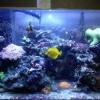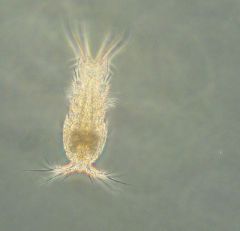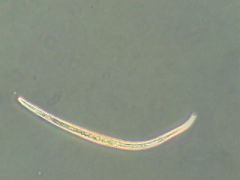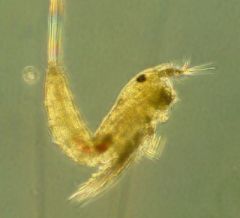-
Posts
221 -
Joined
-
Last visited
Content Type
Profiles
Forums
Gallery
Events
Store
Everything posted by cabrerad
-
Thanks to all who traded with me. Killrblue: I personally use super glue gel. It does have to be the gel type to work well. I take whatever I am going to glue the frag to out and let it air dry for a minute or so and then add some superglue gel. Then I attach the frag and let it sit for another minute or so and then I place the frag back in the water. Some people are particular about how they attach their caps so they get maximum whirling etc., so if you are concerned about that maybe someone else can chime in. The caps do seem to encrust more quickly if you glue part of the leading edge to the rock as opposed to the cut (fragged) edge or the bottom of the cap. David
-
GaryL, I'll make a frag for you. I also replied on the frag swap thread. David
-
GaryL, I'll bring some of the green tentacle zooanthids for you. Also, Anyone have a frag of a multi color Caulastrea (different color center)? I will trade an all pink or all green caulastrea frag (or something else). I am trying to collect different colors. David
-
I have zoos with green tentacles and purple/ white centers if anyone is interested. I Have large rocks covered with them so I could cut to pretty much any size. David
-
<font color='#000000'>I have the following available for trade/sale: Purple with green tentacle/specks zooanthids Orange/pink Montipora cap like sp. frags, mounted (2) Montipora digitata green frags, unmounted Pink Caulastrea (Doug, Moshin) Green Caulastrea Free Borneman Litho/Capnella (Naso) Purple/green mushrooms (Naso, cjm033, Ghazanfar) *Gone* Brown zoos with pinkish center (Naso, David Fernandez) New additions I have: Green Ricordia florida single polyp..for trade or sale David</font>
-
I just wanted to make sure you were not reading 2.5dKH. The alkalinity is not too far off normal saltwater values. I am a bit surprised you have 500ppm calcium and your alk is not higher. It implies that calcium is being overdosed with respect to alkalinity. So increasing alk and watching Ca can help. Do you dose calcium seperately as well (CaCl, calcium reactor)? If so, you may be adding too much. Check this link out on how to adjust your alk. Your values fall into zone 4. http://www.advancedaquarist.com/issues/nov2002/chem.htm
-
Chris, Moving your DSB could certainly have caused the bloom you describe. Basically you turned your nutrient sink into a source by moving it. I second the use of carbon to help out (with water changes as well). With regard to Rowaphos, I have not used it personally, but I believe it needs to be fluidized to work effectively. Also, what are your units for your alkalinity value (DKH, Meq/L)? David
-
58 Gallon (27 total): Pieces obtained through WAMAS/ local reef keepers: 22 Obtained via WAMAS alone: 22 Pieces fragged for trade/sale/donated by me: 6 29 gallon (11 total): Pieces obtained through WAMAS/ local reef keepers: 1 Obtained via WAMAS alone: 0 Pieces fragged for trade/sale/donated by me: 6 20 Gallon (5 total): Pieces obtained through WAMAS/ local reef keepers: 4 Obtained via WAMAS alone: 4 Pieces fragged for trade/sale/donated by me: 4 Grand total Pieces: 43 Pieces obtained via WAMAS/local reefers: 27 total fragged: 16 David
-
http://www.reefcentral.com/forums/showthread.php?s=&threadid=475712 Above is a link to a discussion on acropora browning. Many seem to agree that wild caught or grown corals will initially brown (increased zooxanthellae density, and also decreased UV protecting pigments) when introduced in the hobbyist's tank. One individual did state browning is due more to increase in photsynthetic pigment density than symbiodinium density. Comments? Some corals go back to their inital coloration, some don't. Many seem to connect browning to lighting. I imagine in the cases where the corals do eventually "color up" the initial browning is a compensation mechanism to the new conditions. So is the interpretation that if the lighting is different than in the wild, but still sufficient, the corals will eventually photoadapt and begin to "color up"? I wonder if some of this is a way to compensate from the initial stress of transport (the repair of which is going to cut into the energy budget of the coral), although I did not see this mentioned. Nutrients, especially nitrate are also cited as a cause of browning. I imagine this is a major factor in tanks where the corals do not "color up", or tanks where previousy non brown corals start to brown. It does seem, however, that more remains to be learned on the subject.
-
My understanding is that brown outs are fairly common in imported coral mini colonies. Some of these corals have come from outdoor pens where conditions and lighting are very different from that in a tank. In addition, these corals have been through quite a lot before they got to us. So although the coral may look quite nice when you buy it, chances are it's highly stressed. So, provided you have a mature tank and water parameters sufficient for acros, you can still see brown outs. It will take time for the coral to recover and adjust to the new tank conditions. Even so, some corals do not make it in even optimal conditions. I know I have seen threads about this subject at reefsorg and reef central, so searching the threads may also be a good idea.
-
I second what Chris said. Regardless of whether one area has better water than another, you are still going to be introducing various dissolved compounds into your tank. My RO/DI water reads 0ppm, my Brita water reads around 50 (for reference) and I can't quite remember, but I think my tap is well over 200ppm. So if I were to use tap water I would be introducing all kinds of stuff to the tank, some of which i can't test for. I try to make it a rule to not add anything to my tank I cannot test the levels of. You can buy a very good unit for not a lot of money (pm me if you want some suggestions on good models, i love mine). For reefing I consider having at least RO water a must. It makes life much easier in maintaining proper conditions in the tank. This is especially true for those corals sensitive to things such as phosphates. David
-
Personally, I would opt for better lighting than NO. First, your tank is going to look better. Second, the fauna on your live rock will fare better. Third, anecdotally at least, I have seen marine fish fare better with better lighting. I don't know if anyone has tested this or not, but it's just from my experience and that of some others (if these are reef fish they are exposed to really high light conditions in nature). Fourth, you may decide to add corals later on and really need the lighting. What kind of set up are you thinking about? David C.
-
Here's a link on the Lionfish as an invasive species in the Atlantic. I think the fish keeping route to introduction much more likely than through bilge water personally. There are several other tropical Pacific fish species that have been spotted in Atlantic waters. Here are two quick links on the subject. http://www.invasivespecies.gov/ http://www.nccos.noaa.gov/stressors/invasives/science.html David C.
-

how many watts of light do we manage
cabrerad replied to a topic in Welcome to WAMAS: FAQ / FYI / Hobby News
1 X 250 and 2 X55 on 58 2 X 24 and 1 X 55 on 29 1 X 55 on 20 =518 my place is like the inside of a cave compared to some of you -
Grav, I would suggest thinking about building your own stand (unless you can find one built by another reefer). This way you can fit the sump and decor you want and not have to compromise. David
-
I have succesfully treated ick with garlic. I just finely chopped up a few garlic cloves and mixed it in with the fish food. It has worked every time. Anyone else tried garlic? David
-
Reefstore.com=Reef Tank Reef Tank is the storefront, Reefstore.com is the web site. David
-
I second dbartco's suggestion
-
If you go RO/DI you should be able to get 0 TDS (ppm) at least until the filters start to get old. With respect to the size of the prefilter, I would recommend against a realy small pore size. I would suggest going with a 5-10 micron prefilter. If you use a smaller pore size in the prefilter you will get early pressure loss at the first stage once the filter becomes dirty (so less water is made). You should opt for a unit that has larger (5-10 micron) prefilter, and then say 5 and 1 micron carbonfilters after that. That way you are filtering down to 1 micron before the RO membrane while not affecting the pressure as much. I got my RO/DI here: http://www.airwaterice.com/ I have the Typhoon model (2 years now) and it works very well. They also have water units for human consumption and I think a dual unit. David
-
In my experience, (at least with the yellow heads) is that the make 2-3 holes with one being highly preferred. After that they stick pretty much with the favorite hole. So they ae not going to tear up all of the substrate. Once they make a favorite hole, I would not mess with it as it will stress them and cuase them to dig more. They are jumpers, so you need to secure the top of your tank. As for getting them in the DC area, that is hit and miss. You might want to contact some stores and make a request and see if they can bring some in. I have seen some jawfish at Marine Scene recently. David
-
Hello all, Has anyone tried out the new Oceanic salt (at least I think it's new) that has hit the stores? Opinions? David C.
-

How many gallons do we manage?
cabrerad replied to Sph2sail's topic in Welcome to WAMAS: FAQ / FYI / Hobby News
58 gallon + 25 in sump=83 gallons 29 gallon tank 20 gallon tank So 132 gallons total





